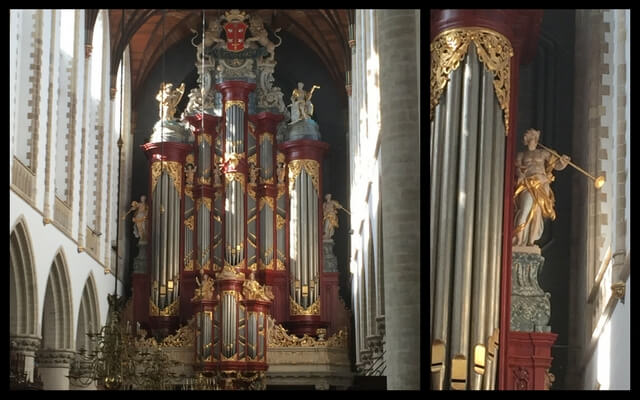I had been anticipating my visit to St Bavo Kerk Haarlem for about a year. I was especially looking forward to this as it would be the first historic baroque instrument of international repute that I would visit.
The image of this instrument will be familiar to many readers. It is one of the iconic organ cases and it screams ‘Baroque’ at you from the moment you set eyes on it. Interestingly the individual voices do not so strongly reflect the sound that I had anticipated from an instrument whose core pipework dates from 1738. It was when completed the largest organ in the world. It was built by the Amsterdam organ builder Christian Müller, with stucco decorations by the Amsterdam artist Jan van Logteren, between 1735 and 1738.
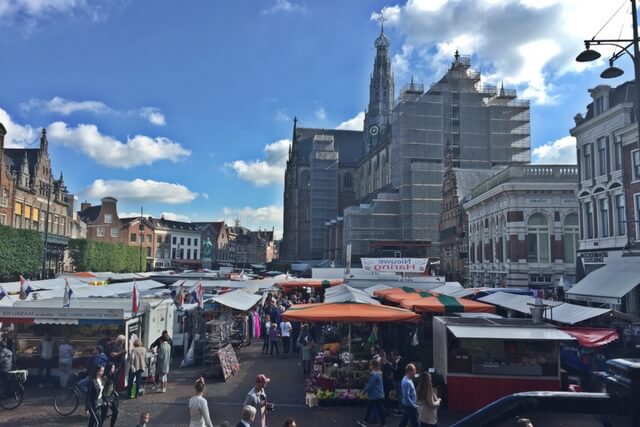
A friendly welcome and the keys to the organ
We were greeted by Organist Anton Pau who could not have been more welcoming and we were immediately handed the keys to this great instrument and given a very quick introduction. Unlike most instruments of size this one is really very straightforward. There is no sequencer or indeed any pistons to navigate. There is not even a swell box to forget to close.
As you will see this organ is pretty much unchanged from its building almost 400 years ago. Huge draw knobs on square shafts, pedal couplers operated by small toe levers. Registrants needed on both sides of the console to have any hope of a quick registration change. So just as it was when Mozart played here at the age of 10 in 1766.
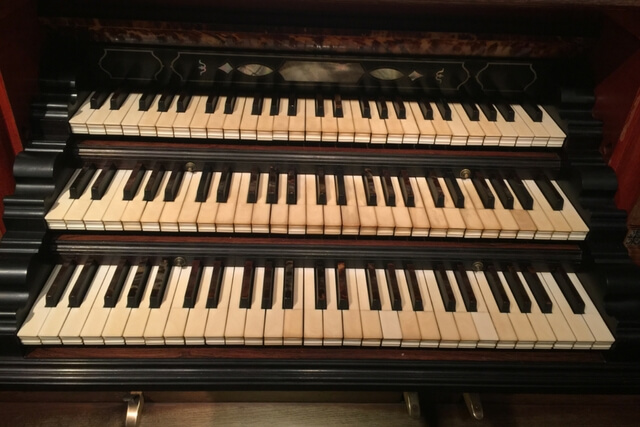
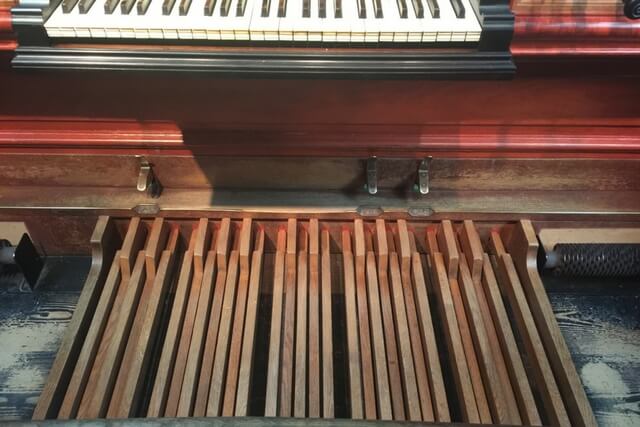
I mentioned above that the Muller organ was not quite the typical baroque sound I had anticipated. Unusually the flutes were quite mellow and almost totally devoid of any chiff. The Prestants too were also very smooth and in the loft did not seem to have the power expected from such a huge instrument. Loft impressions though can be very misleading, shielded as we are by the huge positive case behind us that of course dominated what you hear. To assist there is an audio system fed by microphones in the nave. This is listened to on head phones so you get a better impression of what the instrument sounds like in the church.
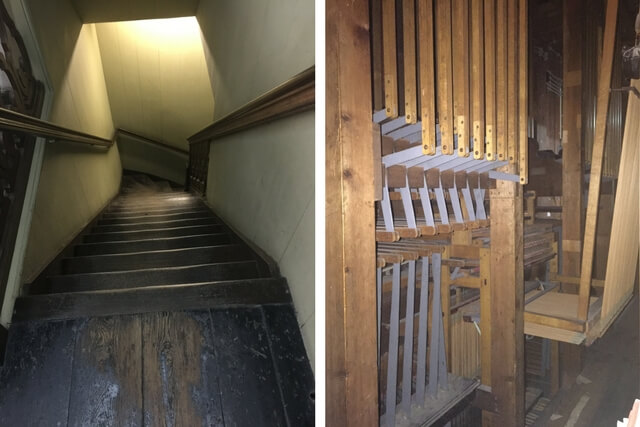
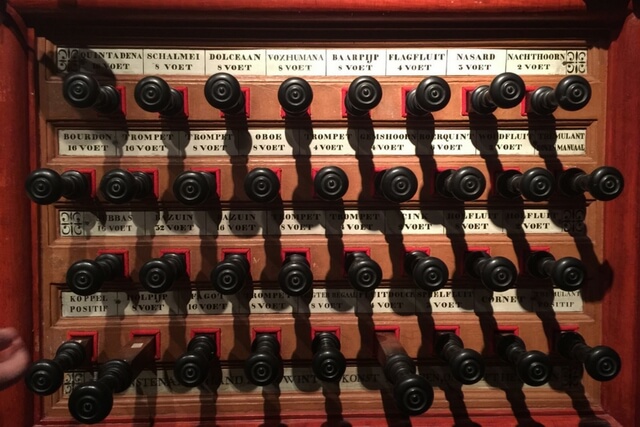
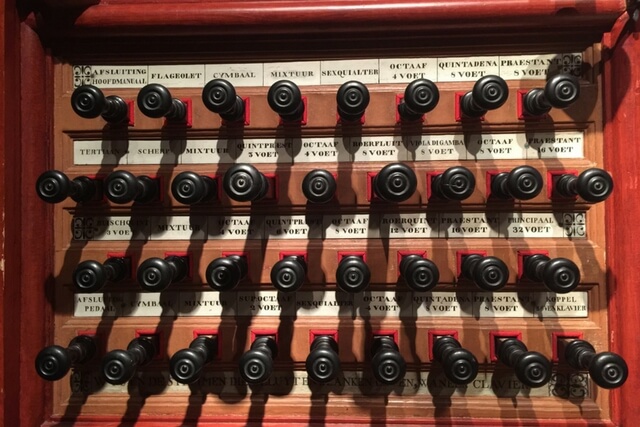
An impressive church and a few surprises
Visiting St Bavo one is first struck by the sheer scale of the building, its amazing tower that houses a carillon and the building wonderful light interior. It started life as a catholic place of worship and became protestant only after the reformation. As with other churches in the area the floor is almost entirely made up of memorial grave stones which creates a rather uneven surface, some so large it must take at least 6 men to have a hope of raising them from the tombs that lie beneath.
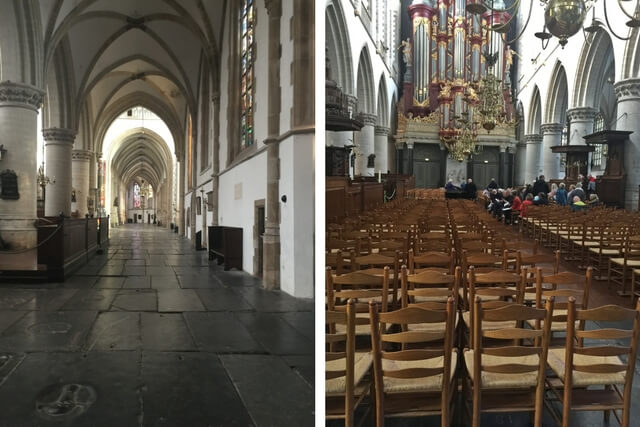
The first organ I heard in the building was a portable instrument in the north side chapel where it was supporting the midday service. Such is the acoustic that this small instrument carried very well into the building situated near as it was to the central crossing. Massive windows illuminate the centre of the church one commissioned as recently at 2009 in a very contemporary style.
The small birds nest organ situated close to the choir at the east end of the church on the north wall was a much later instrument taken from another church. Sadly, I did not get to hear that instrument on this visit.
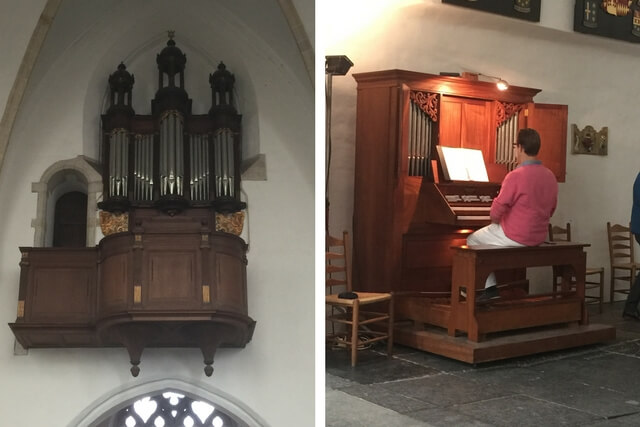
The Muller Organ – A stunning piece of art
The Muller organ case is an explosion of exuberance with much extravagant decoration as you can see in the photographs. It is truly a masterpiece of both organ builder and case designer that fits its west end space to perfection. On entering the building one is also struck with the image of chairs placed to face the organ with their backs to the altar. An almost sacrilegious gesture until one realises that the services are focussed at the east end almost below the organ and seating is set all to face the unusual focus of action far away from the east end altar.
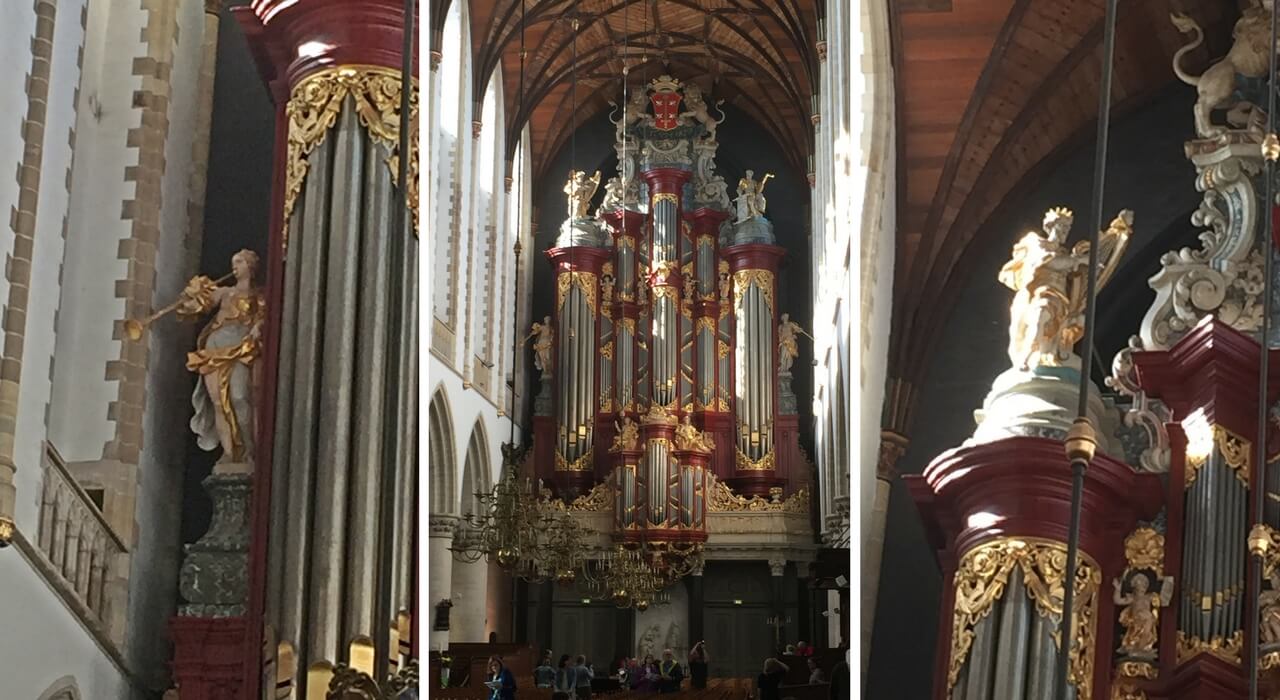
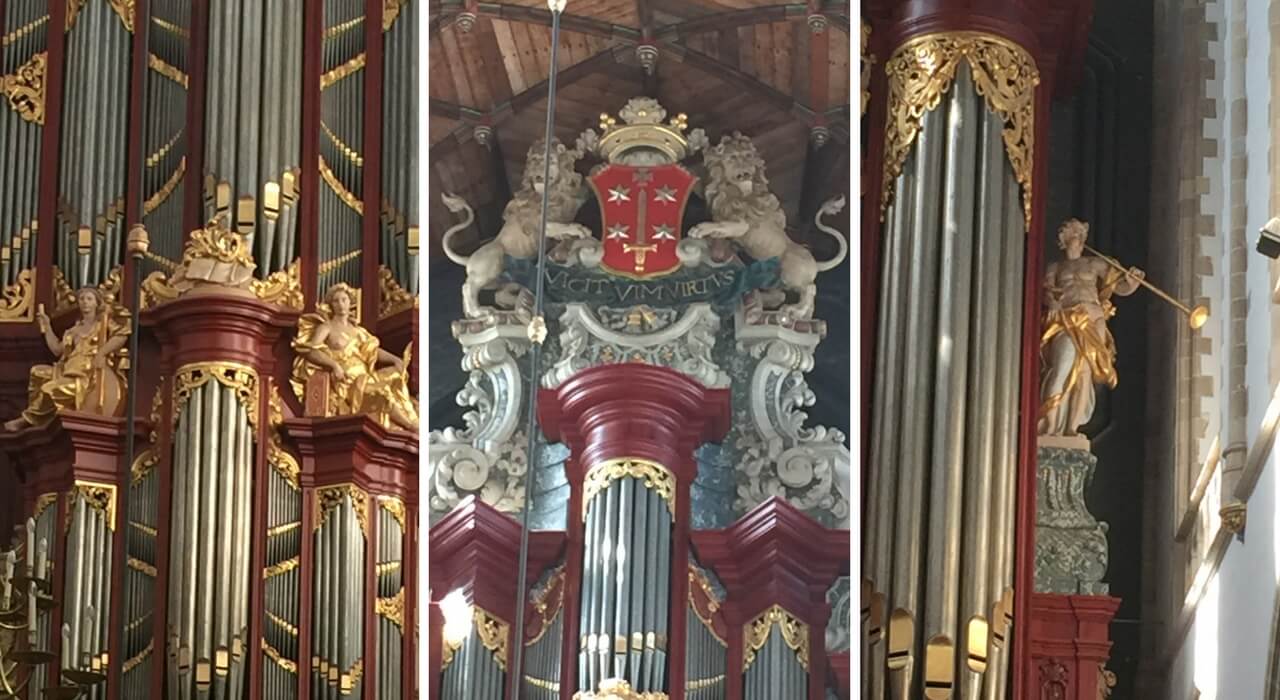
You can see a small view into the bowels of the instrument where the action leads high and away up to the soundboards above and also an intriguing ‘key box’ that presumably allows access through doors high up in the case work for the tuners to do their work.
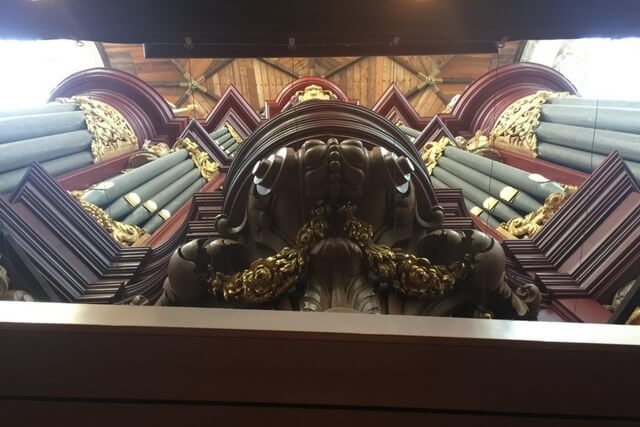
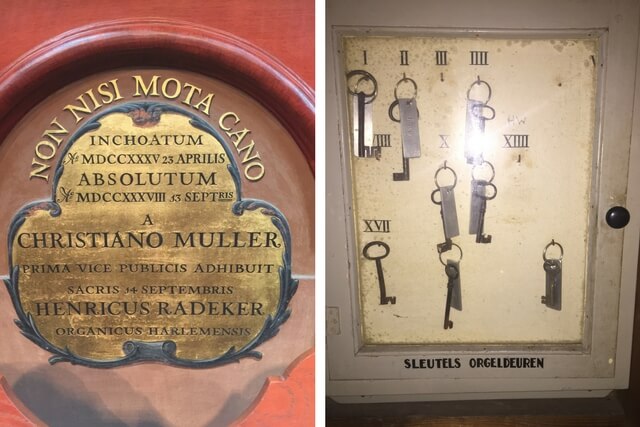
This visit was primarily to make a CD recording with international concert organist Joseph Nolan. This was completed on the evenings of September 26/27 with Mike Hatch and Tim Oldham for the Signum recoding label. The disc will be released in 2018.
I hope you have found this small insight into the Muller organ and the Grote Kerk Haarlem interesting. For those of you with an insatiable appetite for the detail the organ specification is below.

I have had a passion for church organs since the tender age of 12. I own and run Regent Classic Organs with a close attention to the detail that musicians appreciate; and a clear understanding of the benefits of digital technology and keeping to the traditional and emotional elements of organ playing.
